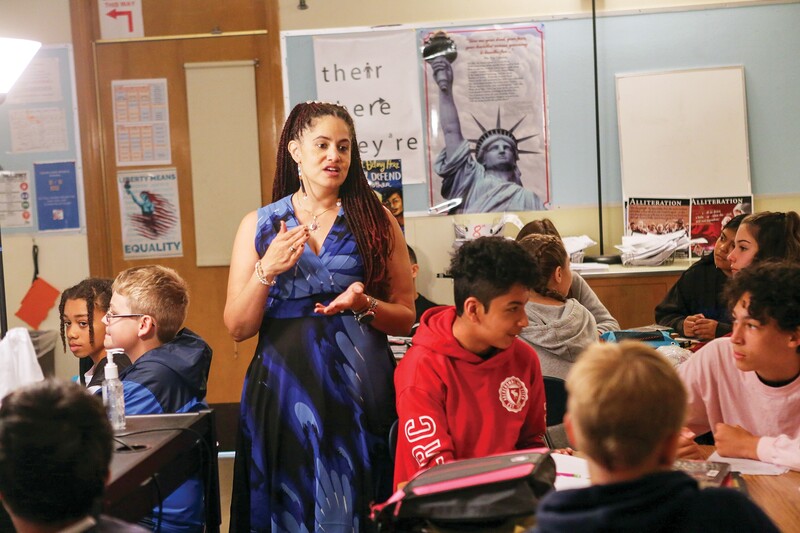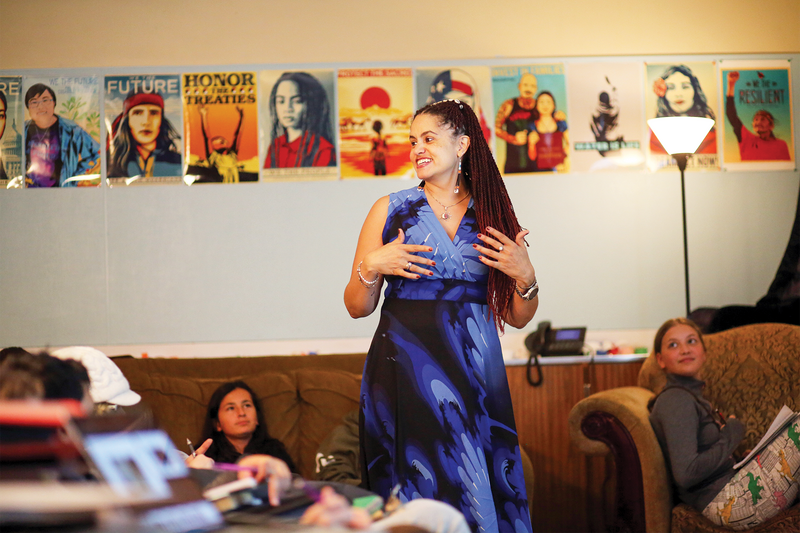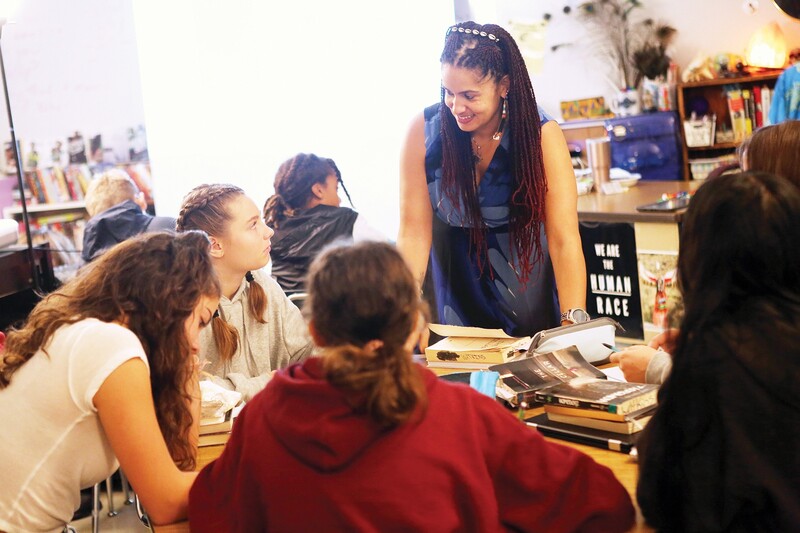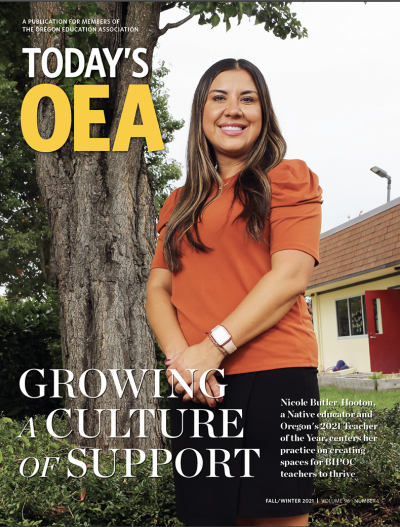Decades of hard work by grassroots activists, native educators, state agencies, tribes, and legislators is paying off with the long awaited introduction of a Native American curriculum into Oregon’s schools this year. Senate Bill 13, also known as Tribal History / Shared History, directs the Oregon Department of Education (ODE) to create a K-12 curriculum focused on educating students about federally recognized tribes in Oregon.
“This is Oregon’s history, and it’s important for all our students to learn, but it will be especially amazing for our native students to finally see themselves reflected in the classroom in ways that acknowledge their tribe’s history and current contributions to society,” says Angie Morrill, Program Director for Title VI Indian Education at Portland Public Schools (PPS).
Morrill, a member of the Klamath Tribe, grew up in Portland in the 1980s and attended Jefferson High School. The Klamath Tribe was terminated with the federal Indian policies of the 1950s and wasn’t restored until 1986 — which means she essentially grew up as a member of a tribe that, by federal standards, didn’t exist.
“When I was in school, there was no framework to understand the tribes in Oregon. I would go to the library and all I could find was history about the Klamaths and Modocs, and a war that happened in 1872,” she says. “It was like we didn’t exist, like we were walking ghosts.”
When Morrill was 21, the Klamath tribe was restored. Because she didn’t learn about her tribe’s history in school, all she had were family stories until she pursued her PhD in ethnic studies.
That will all change for Oregon’s current and future students.

Senate Bill 13
Through Senate Bill 13, ODE was directed to develop Native American curriculum which districts will then be required to implement. Lesson plans will be made available to teachers as early as October 2019, with implementation starting in January 2020. ODE has created 45 lessons for grades 4th, 8th, and 10th — and training will be available to help guide teachers in teaching Tribal History / Shared History. The legislation requires lesson plans across multiple areas of studies, including science, math, English language arts, PE/health, and social studies.
Before this new curriculum was developed, Oregon had been missing a critical opportunity to fully leverage the strengths, assets, and contributions our Native Americans bring to their communities. The lack of an accurate and complete curriculum may contribute to the persistent achievement and opportunity gaps between Native American students and other students.
Additionally, legislation required ODE to make resources available to the nine federally recognized tribes in Oregon to create individual, tribally-specific, place-based curriculum that Oregon teachers can embed into their classrooms. The state is fortunate that each of our nine tribal nations is developing their own curriculum which can supplement ODE’s required Tribal History / Shared History curriculum.
Mercedes Jones, a Confederated Tribes of Grand Ronde curriculum specialist says that the Grand Ronde lessons include both tribal history and current events — and that it will continuously update with time. The Confederated Tribes of Grand Ronde’s curriculum is comprehensive, including not just lesson plans, but also questions for discussion and different ideas for classroom activities.
“We’ll have lessons on our native language for example, something that a group of elders kept going throughout the Grand Ronde history of being terminated and restored… and then we’ll also have lessons about the tribe’s current contributions, which is so important because it gives context. It shows that the tribes aren’t extinct, like the dinosaurs,” Jones says.
“Through professional development trainings, we hope to show teachers that they can embed this curriculum into what they’re already teaching,” says Jones. “So instead of thinking of it as adding another layer to their teaching, it’s there not to be added on top but instead to enhance what they’re already doing.”
“When I was going through elementary, middle and high school, we never learned about Oregon’s tribes. It wasn’t until I became an adult that I started learning more,” says Jones. “I recently had a daughter and I am really excited that she will grow up differently, and will be able to see herself in the classroom now. It won’t just be plain text book, it’s real life content.”
“I have a son and he earned his GED, but he really struggled,” says Morrill. “There’s a focus right now on our native and black students, because they are falling under our watch; they’re really struggling.”
One of the hopes with this new curriculum is to demonstrate that learning about tribal nations and Native Americans is important for all students. Each nation has a distinct origin story, worldview, and timeline of their history and contemporary context. However, much of that information has been presented to the general American public from a non-Native perspective, filled with clichés, misconceptions, and falsehoods. Additionally, it is a hope that Native American students will appreciate seeing themselves in the curriculum and thus be able to better connect to their education.
The creation of Tribal History / Shared History was possible through the contributions and expertise of tribal representatives, ODE staff, Native American educators, Education Northwest, and countless other partners.
- April Campbell, Oregon Department of Education
Editors Note: This article has been reprinted with permission from www.myoregon.gov, the news service website of the State of Oregon.




